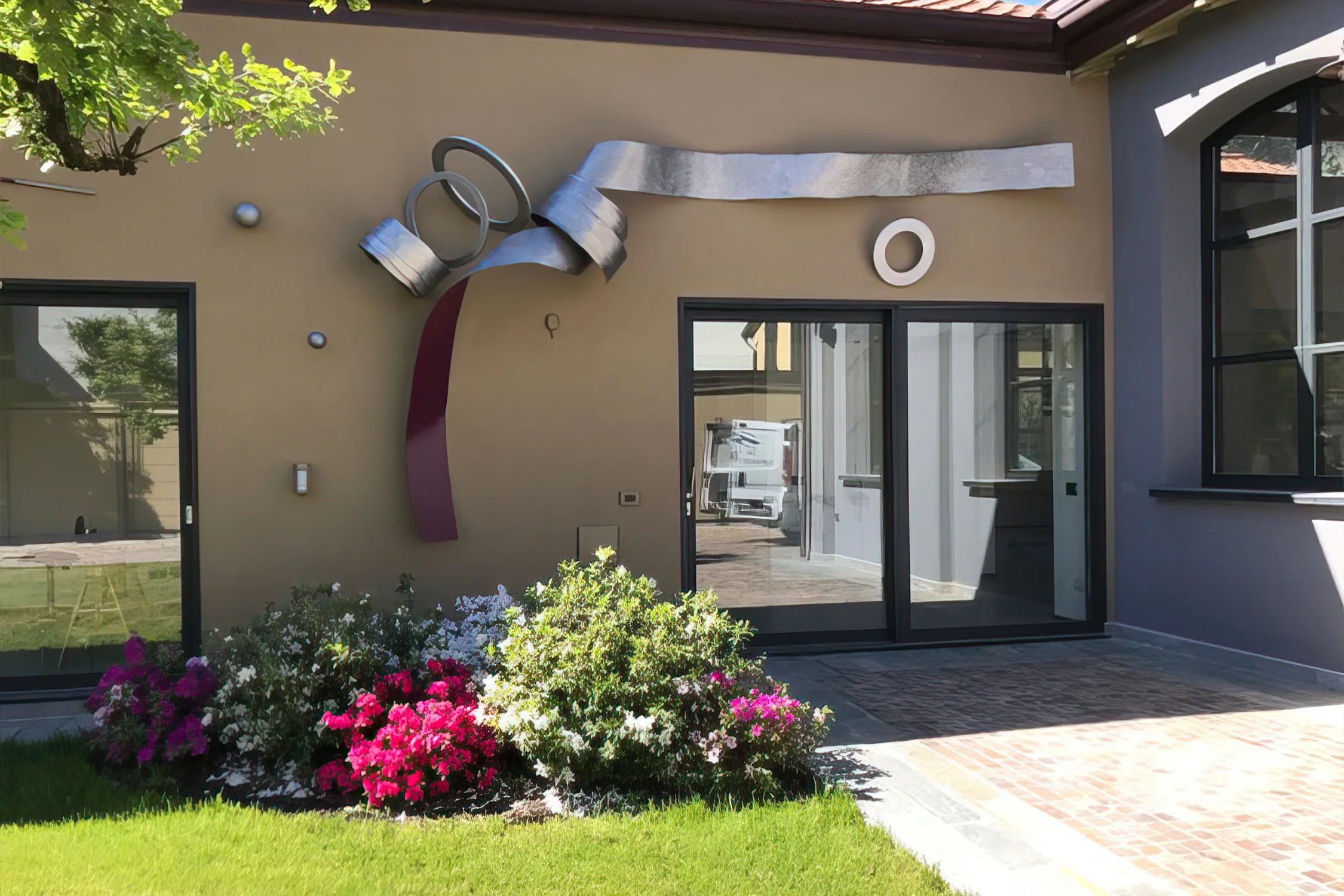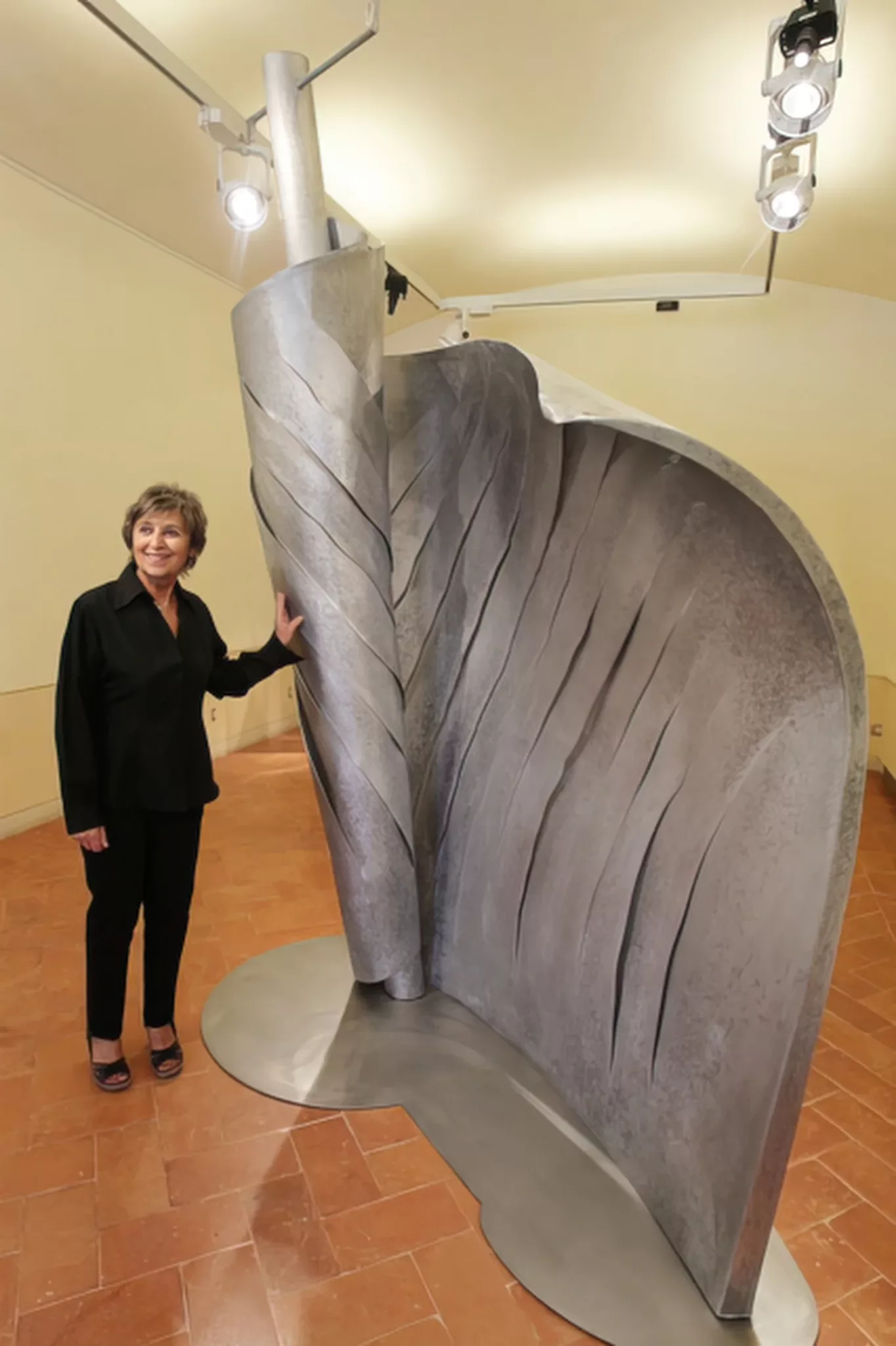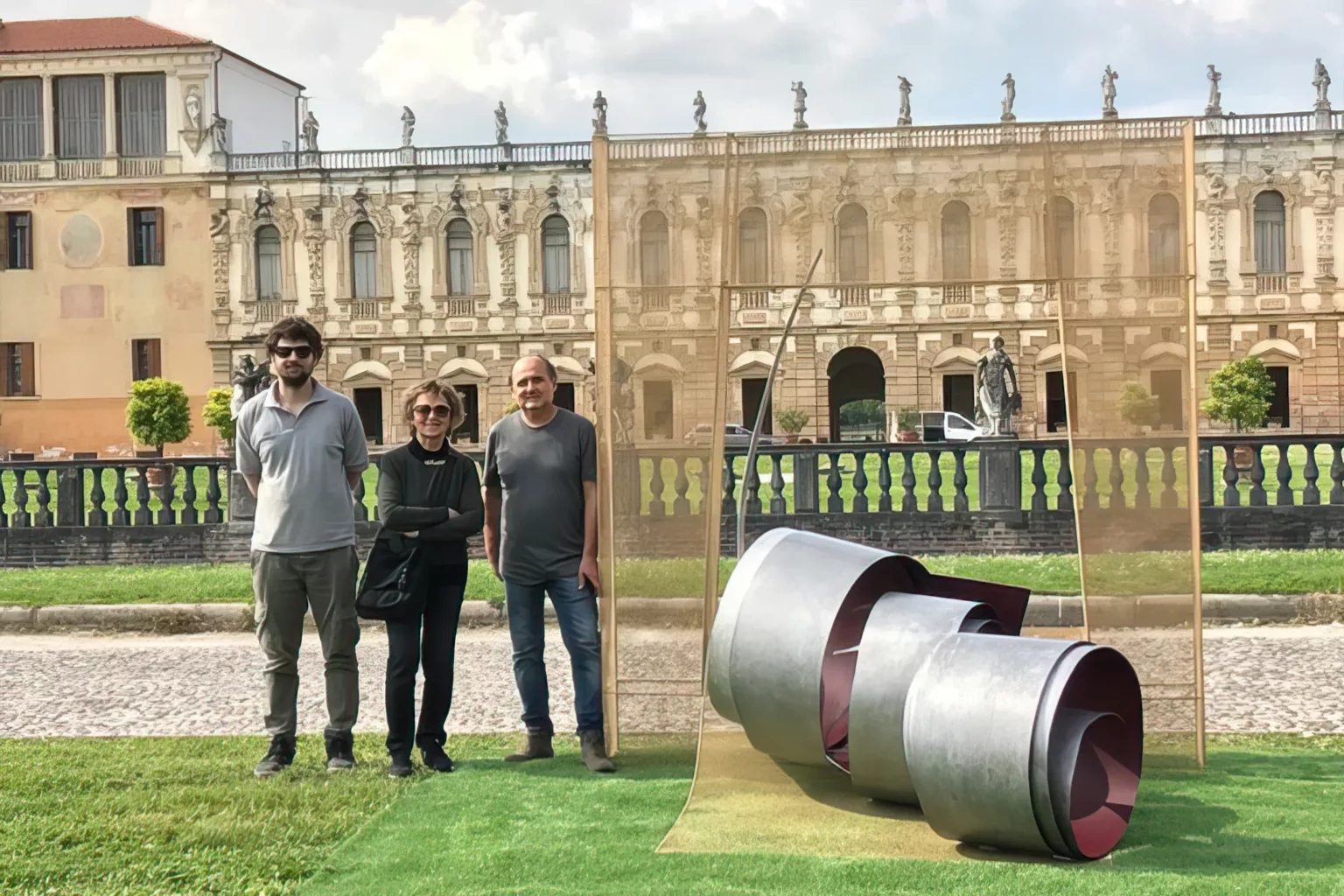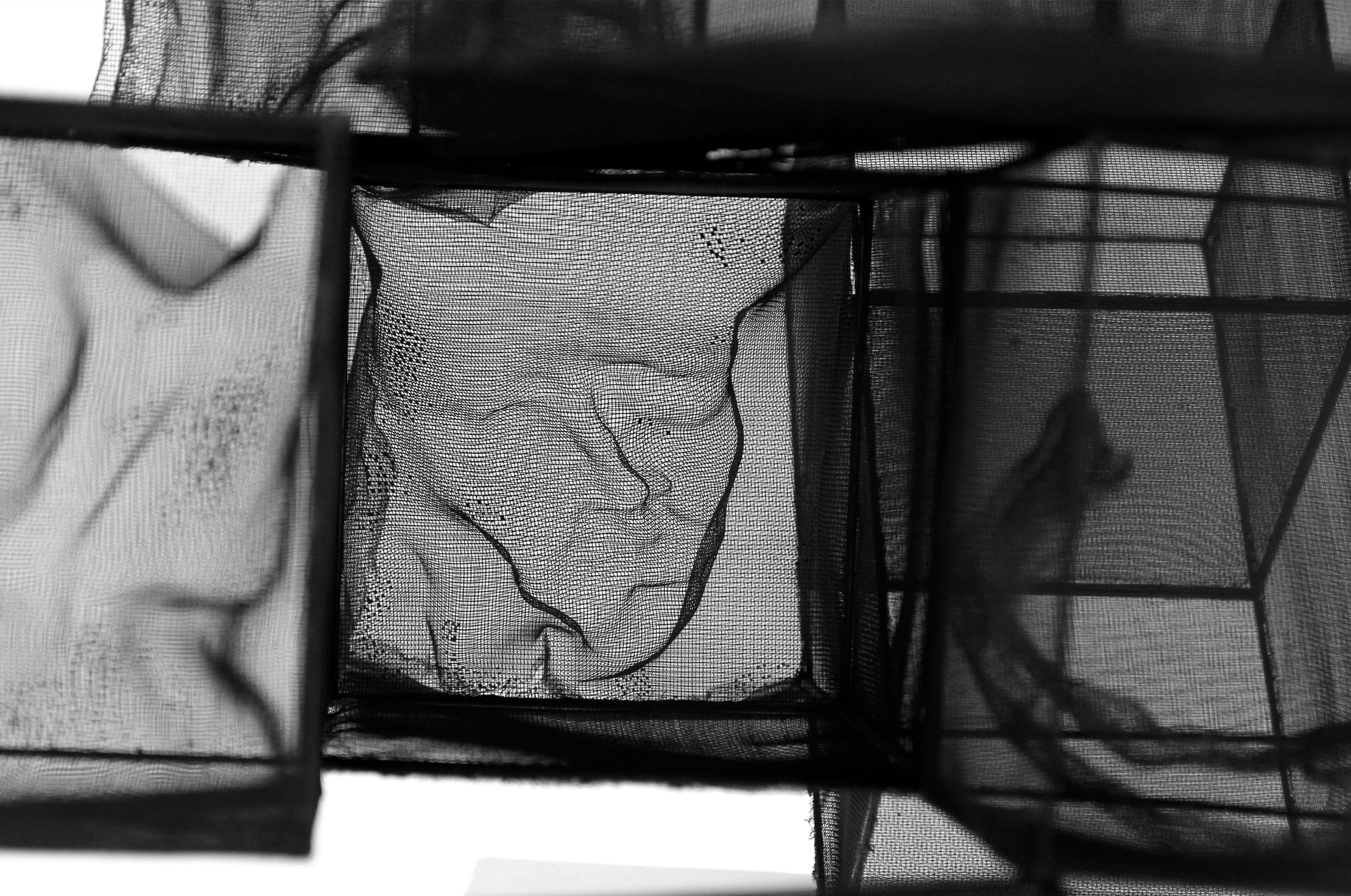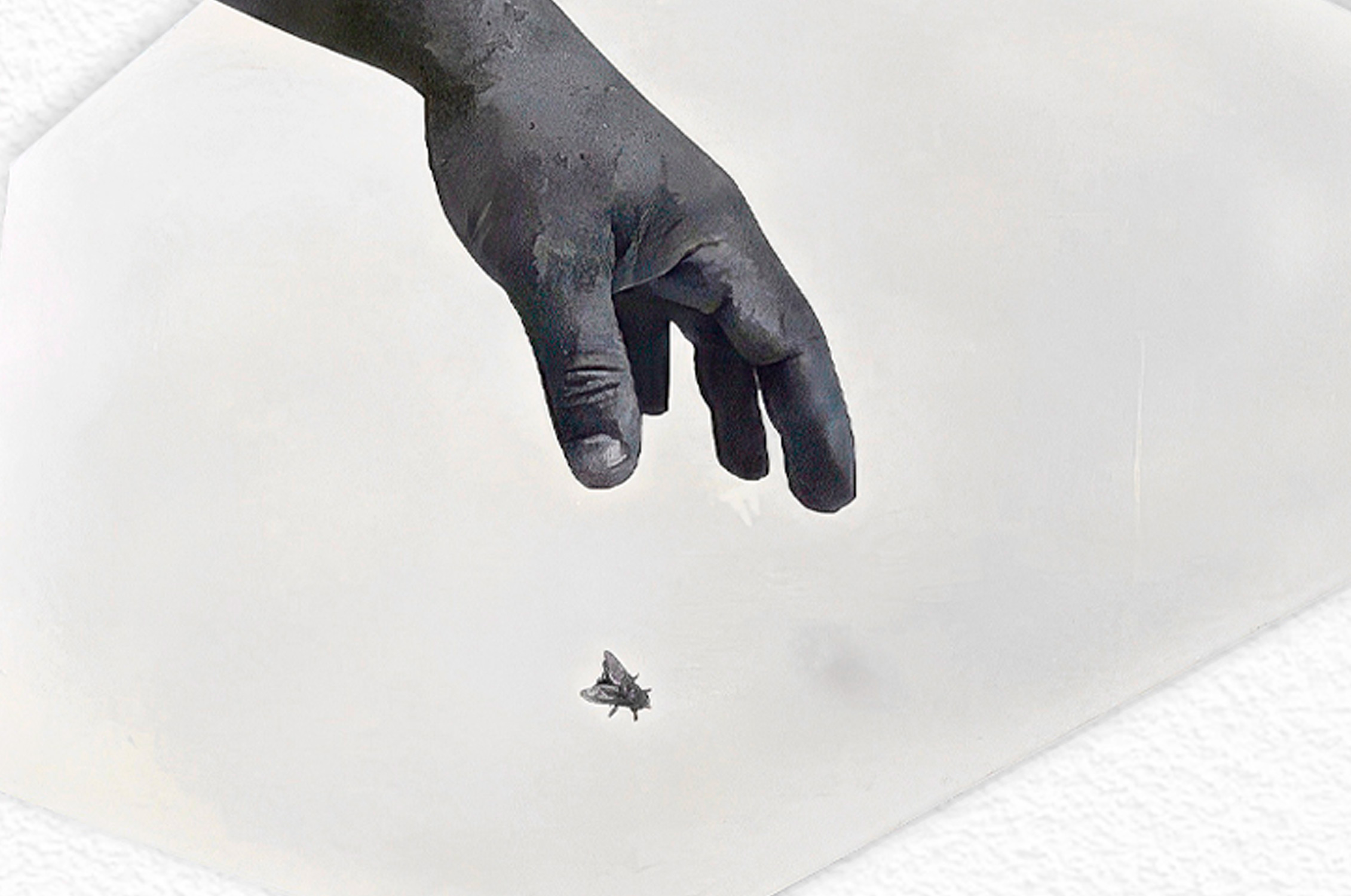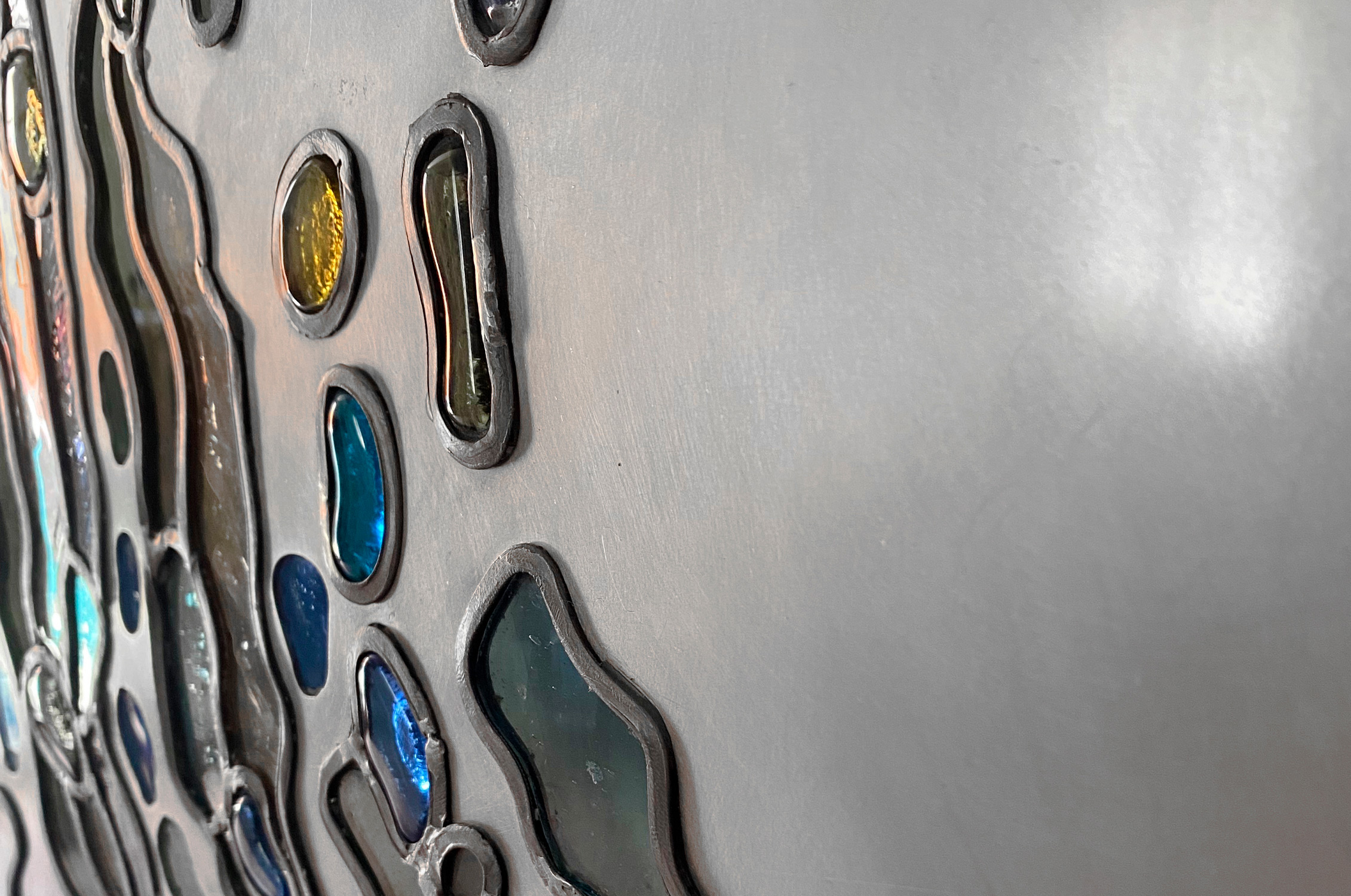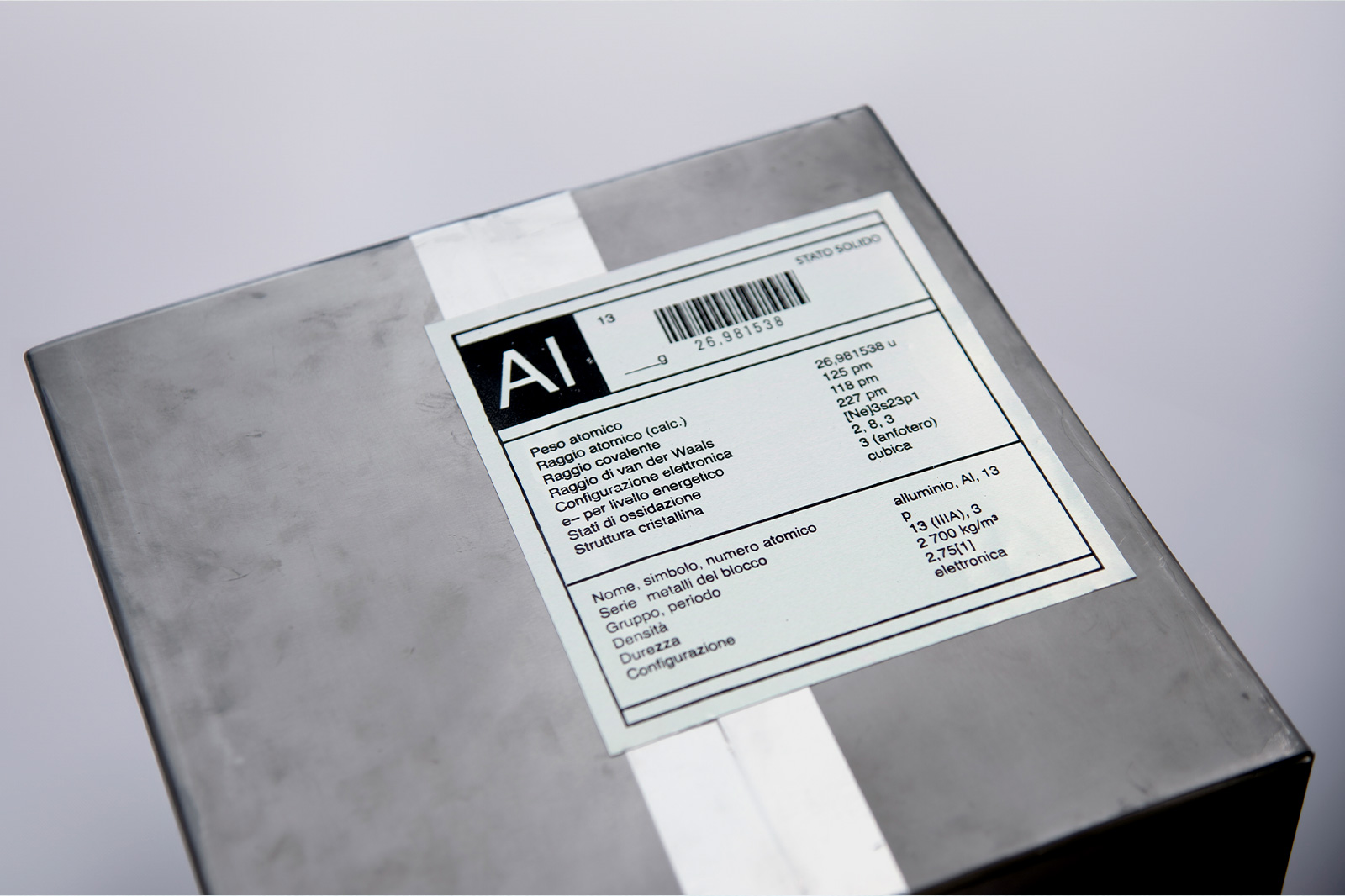SPECIAL MENTION OF THE JURY 20-21
Interview to Mirella Saluzzo
by Ilaria Ferri
She has been using aluminium since the early 90s and her artistic research leads her to question herself relentlessly on the close link between space and work. The colours fade and the shapes become less daring reaching rigor and essentiality without ever abandoning their own poetry.
Her works now recall the precariousness and instability of the present and invite us to look beyond, towards new horizons, towards distant worlds.
You graduated from the Brera Academy of Fine Arts in 1979, and from that moment your career as an artist and your research path began. What is art for you? What was the moment when you realized that Art would be part of your life?
It happened the day I quit my safe job to enrol in Brera. I made a choice that I knew would definitely change my life.
Art has led me to be what I am today, to see beyond the forms of reality, to broaden the horizon of the obvious to seek out different experiences.
In your artistic production, your painting and sculpture alternate happily. Although you have a degree in painting, sculpture predominates among your works. How did you come to sculpture? How do you choose the technique to use? Based on the starting idea or based on its realization? Which of the two allows you to express yourself more freely?
Painting and sculpture have always coexisted in me. In the 80s I was interested in clay, then in assemblies with various materials, and finally, for about twenty years, I have been using aluminium sheets that have so far given me the opportunity to express myself at my best. However, the traces of my pictorial past remain evident in my sculpture works.
Every creative activity is a consequence of the need to push research “beyond”; thus, at least for me, the idea arises first and after careful checks, it leads to the creation of the work. It is in this process that the materials and the technique to be used are chosen.
Azione di sorpresa, 2019. Sculpture placed on the external wall of her studio in Ravenna.
You attended the Brera Academy in a golden period and you were able to meet personalities such as Guido Ballo, Luciano Caramel, Luigi Veronesi, Roberto Sanesi. How much can the presence of historians and critics affect the path of an artist? Specifically, how much have they influenced your own way of understanding and practicing art? And what other artists have been your reference points?
From Roberto Sanesi, Guido Ballo and, in particular, from Luciano Caramel, who are also my good friends, I learned the cognitive tools that, since then, allow me to confront myself with the work of art; from Luigi Veronesi, with whom the teacher / student relationship was soon overcome, I instead learned the “doing” in art. There are several avant-garde artists to whom I have looked, but perhaps W. Kandinsky is the one who most captured my interest.
Therefore, I consider myself fortunate to have experienced such a rich formative period. These important characters, who are at the same time available and open to dialogue, have developed in me the determination to carry out my research seriously, avoiding easy consents.
Your artworks, from the beginning to the present day, seem to take possession of space more and more: the dimensions increase, from the first geometric lines we see sinuous climbing movements roll up and stretch in space. The movement seems to be inherent in them and seems to guide them in search of something. Do you think art is a way to explore and learn about space? Both the inner one and what surrounds us?
In fact, it’s this way. In my works, as Elena Di Raddo says in her text, “the breath of sculpture” in the catalog published for the exhibition “Mirella Saluzzo Fuori Asse“, currently on display at the SABE Foundation for the art of Ravenna, “…. a meaning emerges that certainly goes beyond the formal dimension of the work, a more intimate and reflective aspect that opens on the observation of the reality of man and the world in which he lives “
Into the Wave, solo exibition at Fondazione Cassa di Risparmio, Imola 2012
You started using aluminium in the 90s, without ever abandoning it. Although the historical evidence on the aesthetic use of aluminium is by no means recent, it is not the most used metal by artists. How did you find out? What made you fall in love with aluminium?
It was a chance discovery. In the beginning, I was looking for a material that was rather light, easy to handle even in large dimensions. Then, once I tried it, I saw that I could get the results I wanted and so I continued to use it.
Some themes are constant in your works: such as flight and movement (I am referring to the Rolling up series, or the Crossings or other older works). In fact, her sculptures, even if large in size, convey lightness, dynamism, and a profound reflection on balance. Inevitably, the idea transpires from the shapes: that is, a search for freedom and balance. Are these themes among the ones you feel particularly or did they arise randomly during your artistic career?
Slides, slips, impractical stairs, cuts, diagonals, vibrations, wing strokes, descents, and ascents, always lead my work towards a balance that, only apparently, appears precarious.
These themes did not enter my research by chance; as already mentioned, they are consciously a metaphor for the man of today and of the time we live in.
Exit – 2019
You enrolled in the COMEL Award with the work Relations, earning a special mention from the jury who was fascinated by your work. How did the idea of participating in the competition come about? What made you decide to register this work in particular? How was this experience in your opinion?
I have always been reluctant to take part in events of this kind, considering them more suitable for younger artists. But this time, motivated by the seriousness of the Award and the enthusiasm of the organizers who, despite the difficult pandemic period, continued, with their commitment, to give testimony of the social importance of art, I decided to enrol with the little sculpture “Relations” that I was completing just in the period in which I matured my decision.
To my surprise, I received a special mention from the jury which, of course, made me very happy.
It was, therefore, a very rewarding experience for me and I regret not being able to attend the inauguration cerimony.

